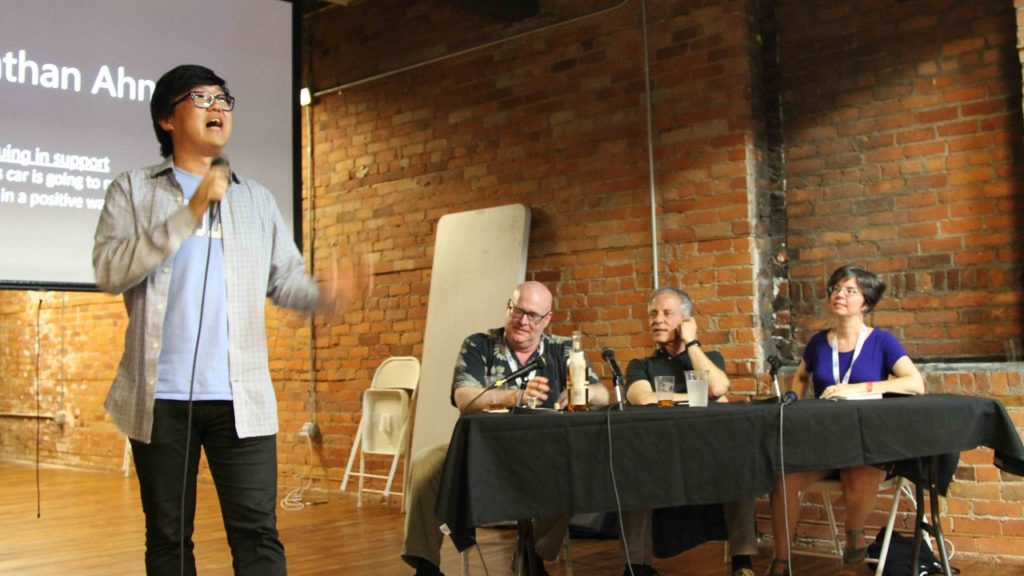 Special to the Philanthropy Journal
Special to the Philanthropy Journal
By Tim Wacker
The Minnesota Valley Action Council (MVAC) lists a car leasing business and a farmers market among its many innovations to assist the needy in south-central Minnesota. But it is recent innovations in the agency’s information technology department that staff now include among their most successful efforts in the same cause.
For several years the MVAC’s IT department used a Laserfiche enterprise content management (ECM) system to convert paper files into digital images for ease of access and storage. But staff knew the software could do more to help them better serve their clients.
Much more than a simple tool for document scanning and storage, ECM software has the ability to automatically move digitized documents throughout an organization, automating the flow of information to rapidly get the right information into the right hands. 
The MVAC knew exactly where to start with its automation efforts: the agency’s Energy Assistance Program. Every week case workers had to drive client funding requests from nine branch offices to agency headquarters, adding hours to the time it took to process applications. The new software allows paper-based files to be scanned into branch office computers and then instantly forwarded as electronic documents over a password-secure Internet portal to certifiers at agency headquarters.
The success of that effort inspired the MVAC to automate other manual tasks involved in client assistance requests. For example, the software now automatically returns incomplete applications for correction and forwards completed applications to certifiers and the state’s disbursement system.
Finished files are automatically archived in a filing plan and folder structure designed to meet the MVAC’s needs. Whereas it used to take days and sometimes weeks to process client energy assistance applications, this task is now completed in hours. And when applicants are faced with having their heat or lights shut off for nonpayment of utility bills, the increased efficiency can save much more than time.
“The 2014 winter was particularly bad,” says MVAC Energy Assistance Coordinator Pamela Wild. “We’re able to respond to emergencies a lot more quickly now. Through the automations we’ve built into our system, the status of files can be tracked in real time. There’s no more waiting and wondering when an application might be, or has been, approved. That’s a big help to folks in crisis situations.”
Similarly to the MVAC, the Community Action Partnership of Ramsey and Washington Counties was also using its Laserfiche ECM system solely for electronic records storage and retrieval before Catherine Fair, the agency’s Director for Energy Assistance, decided to automate some of its paperwork handling. A few months later, Fair was able to reassign 1.5 staff positions previously designated to organizing and archiving paper records in filing cabinets. Now, those staff are working directly with clients instead of merely handling their paperwork.
“There is virtually no chaos in our offices now,” Fair says. “Nobody is looking for information, it’s all right there. My staff is able to instantly access files regardless of who last worked on them.”
Fair’s agency serves the Twin Cities area and has one the largest clients loads of the 25 different Community Action Partnerships in the state. The MVAC, on the other hand, serves one of the least populous regions of the state and processes client applications completely differently. Yet both are realizing enormous time savings through their automated approach to document processing, pointing to perhaps the greatest advantage of all from embracing ECM, according to Fair.
“Each agency can automate these processes in ways that mimic how they did things on paper,” she says. “It makes the transition to paperless technology so much easier and we all realize the same time savings and improved efficiency despite doing things differently.”
There is more than time being saved, Fair says. ECM allows staff supervisors to more easily find and address bottlenecks in application processing within the various departments. By tying into the state’s assistance request payment system, Fair’s department can now determine exactly when a check has been cut. That allows her to assess her department’s application turnaround time, a huge help when the nonprofit’s operations are being audited, she says.
The operational improvements in Fair’s department attracted the interest of the agency’s Human Resources and Job Services departments, which are now automating their document management processes. The successes at both agencies are attracting the interest of Community Action Partnerships elsewhere in the state, with 11 of them now working to automate document processing throughout those organizations.
As new clients install the software, Laserfiche is also working with existing clients to build electronic forms that eliminate the need for clients to fill out paper versions of forms that must then be scanned into the ECM system—allowing these agencies to be completely paperless from the very start of the application process.
Beyond increasing the amount of work done, the use of ECM software also improves the quality of that work, Wild says. Handling documents often leads to mishandling them, particularly when different staff are working with multiple paper copies of the same applications. ECM eliminates all that, greatly improving the accuracy of the information in those records, she says.
Having the applications in electronic form also allows staff to work from home or via mobile device by accessing the documents through a password-secured Internet portal. That helps enormously during Minnesota’s notorious winter months, Wild says, when many staff cannot make it into the office. Perhaps most important, ECM frees staff at all levels of the organization to do the one job they all share: help the needy.
“It has helped us all to be more responsive to our clients,” Wild says. “It means we can spend more time working with our clients and less time working with their papers.”
Tim Wacker is a technical writer for NBN Communications, a Massachusetts-based writing services and market research company.





